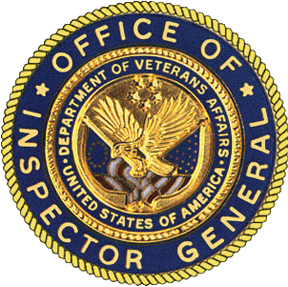Deficiencies in Trainee Onboarding, Physician Oversight, and a Root Cause Analysis at the Overton Brooks VA Medical Center in Shreveport, Louisiana
Report Information
Summary
The VA Office of Inspector General (OIG) conducted a healthcare inspection to assess an allegation that a physician (subject physician), who was not privileged at the Overton Brooks VA Medical Center (facility) in Shreveport, Louisiana, provided care to intensive care unit (ICU) patients. The OIG also identified concerns with a quality review completed after facility leaders’ awareness of the event.
The OIG substantiated that the subject physician, a fellow in training at an academic affiliate, provided patient care for three hours in the ICU with attending physician oversight. Failure to follow the trainee Veterans Health Administration (VHA) onboarding process and lack of oversight of physician coverage for the ICU contributed to the event. The resident student coordinator facilitated the VHA trainee onboarding process before receiving the required verification letter, resulting in the improper onboarding of the subject physician. Additionally, the chief of medicine failed to ensure a process was implemented to verify ICU coverage-pool physicians were credentialed and privileged at the facility.
The Facility Director chartered a root cause analysis (RCA); however, the RCA team’s application of the RCA process left patient safety risks unresolved and did not explore how the subject physician was onboarded as a trainee or provided care in the facility’s ICU. The RCA team’s failure to follow VHA required guidelines affected the reliability of the RCA team’s assessment and conclusion. The OIG also identified a facility practice involving an additional concurrence step, which created vulnerabilities related to breaching RCA confidentiality and service line leaders influence on RCA findings.
The OIG made one recommendation to the Under Secretary for Health to evaluate VHA using an additional RCA concurrence step and three recommendations to the Facility Director related to trainee onboarding requirements, oversight of intensive care unit physician credentialing and privileging, and completing root cause analyses as required.
The Overton Brooks VA Medical Center Director reviews and monitors compliance with Veterans Health Administration health professions trainee onboarding requirements, and takes action as indicated.
The Overton Brooks VA Medical Center Director makes certain that oversight of the intensive care unit physician credentialing and privileging process is completed prior to physicians being scheduled and providing patient care, and monitors compliance.
The Overton Brooks VA Medical Center Director ensures root cause analyses are completed according to Veterans Health Administration policy including team composition, root cause analysis process steps, and timeliness.
The Under Secretary for Health evaluates the additional root cause analysis concurrence step used within Veterans Health Administration medical centers to ensure alignment with National Center for Patient Safety guidance, and takes action as indicated.
